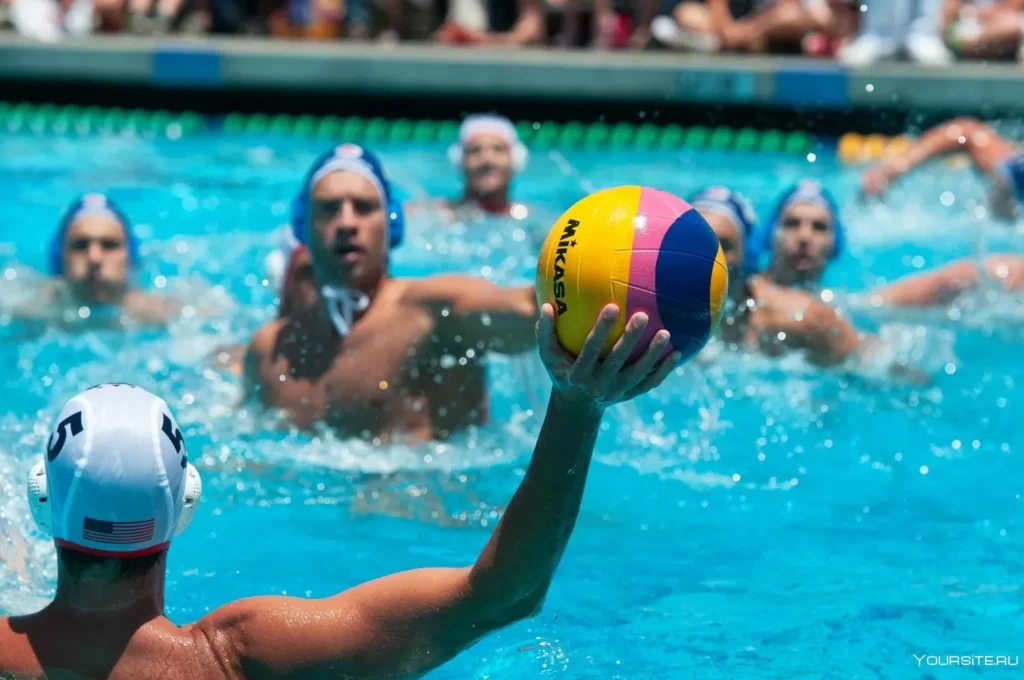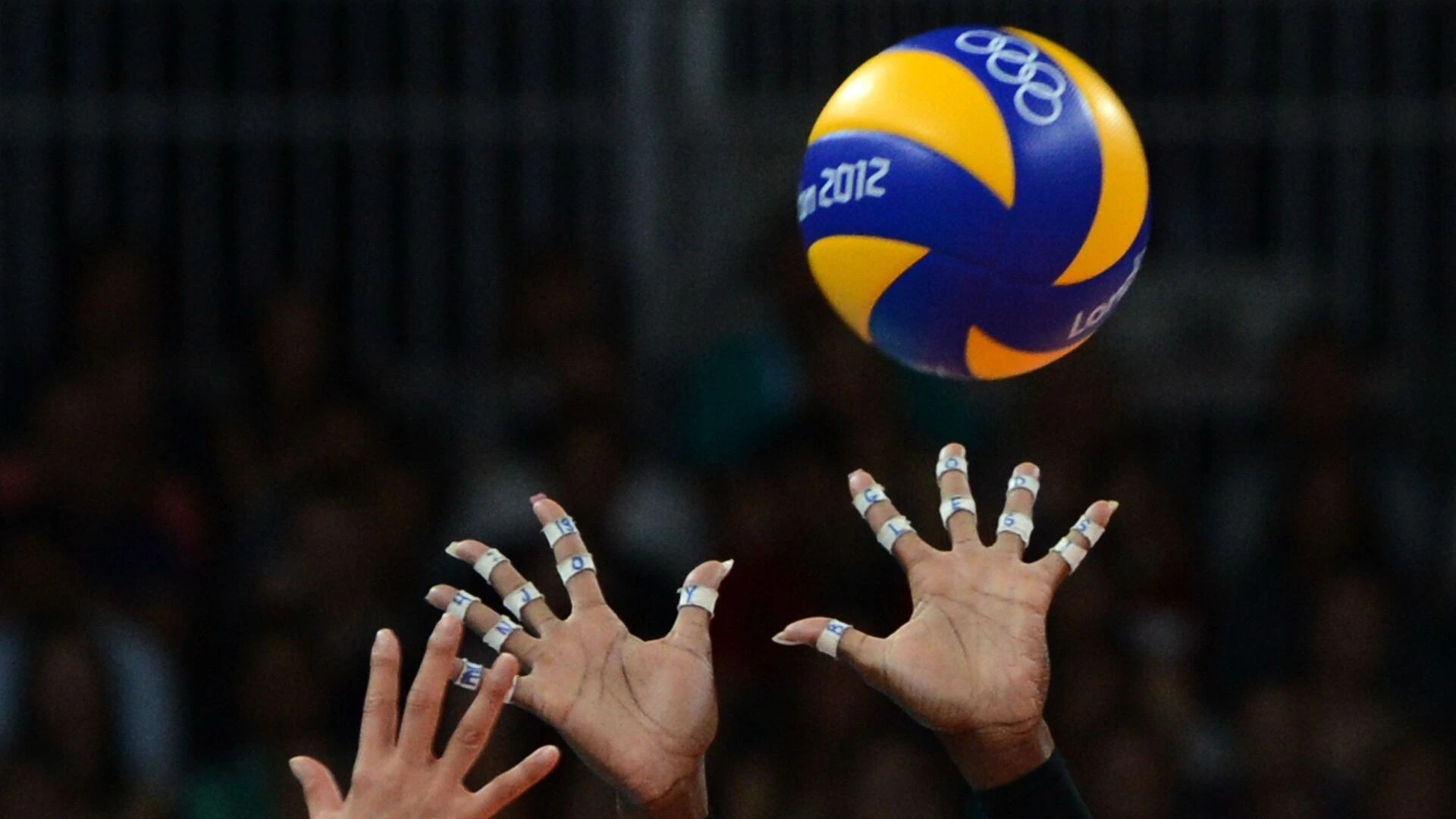Water volleyball is a sea of emotions. Here, the water makes every movement difficult. But it also gives you the opportunity to fly over the surface. Unlike classic volleyball, here the players have to fight not only with the opponents, but also with the element itself, controlling every muscle of the body in order to stay afloat and not lose control of the ball.
Rules and characteristics of water volleyball
Water volleyball is a unique sport in which the court is constantly in motion. The water serves as a natural arena for the game and makes every attack unpredictable. The athletes don’t just move, they literally ‘dance’ on the water while maintaining their balance. At the same time, each of them has to control the ball, the team and their own body. The elements are not just a backdrop here, but a full participant in the process. The rules require the participants to be able to keep their balance and coordinate their actions on an unstable surface. The water increases the strain, so physical fitness is required, which adds to the challenge and excitement.

A full court on the surface of the water
A water volleyball court is a court on the water, which can be either in a pool or in open water. In the case of a pool, the depth is usually around 1.5 metres so that the players can stand safely on the floor. In open water, the conditions can be much more difficult: Here, the current and possible temperature fluctuations must be taken into account.
How to play water volleyball
First of all, you need to learn that the water is the deciding factor. It offers resistance and does not allow you to move as fast as on land. Athletes must learn to keep their balance and coordinate with their partners. An important aspect is the ability to serve and receive the ball correctly, taking into account the resistance of the water. For an effective serve, the direction of the waves and the impact on the ball must be taken into account.
Players use more powerful strokes to compensate for the loss of speed due to the water and shorter movements when receiving, as the mass of water quickly absorbs the inertia of the ball. The team has to work as a single organism and make quick decisions.
History of water volleyball
 The story begins at the beginning of the 20th century, when beach volleyball fans decided to take the game into the water to enrich their sports programme. The first matches took place in swimming pools and on lakes, where athletes tested their strength in new conditions. The emergence of water volleyball was something of a challenge: finding your way around a moving court, improving coordination and adding an extreme element to the game. Over time, the format grew in popularity, attracting more and more thrill-seeking fans. The idea is that the water makes the game more complex, but also spectacular, as every movement of the participants looks dynamic and spectacular.
The story begins at the beginning of the 20th century, when beach volleyball fans decided to take the game into the water to enrich their sports programme. The first matches took place in swimming pools and on lakes, where athletes tested their strength in new conditions. The emergence of water volleyball was something of a challenge: finding your way around a moving court, improving coordination and adding an extreme element to the game. Over time, the format grew in popularity, attracting more and more thrill-seeking fans. The idea is that the water makes the game more complex, but also spectacular, as every movement of the participants looks dynamic and spectacular.
Differences between water volleyball and beach volleyball
Water volleyball and beach volleyball differ not only in terms of the environment, but also in terms of technique. In beach volleyball, players rest on stable sand, which allows them to keep their balance more steadily. In water, on the other hand, every step requires more effort as you have to overcome resistance. The difference here is that the game is played on unstable ground, where even simple movements require a strategic approach. In the beach variant, jumps and sudden changes of direction are actively utilised, whereas in water volleyball, gentle and powerful movements play an important role.
Water volleyball in Russia
The Russian format is actively developing thanks to numerous initiatives and competitions taking place across the country. Tournaments are regularly organised in Moscow and St. Petersburg, in which both amateurs and professionals take part. The development of infrastructure is helping the sport to grow in popularity, with new indoor pools and outdoor facilities being built on the banks of rivers and lakes. Russian teams have already achieved good results in international competitions and the sport continues to gain momentum, attracting more and more young people.
Equipment required for water volleyball
Special equipment is needed to play water volleyball: a net, a ball and net supports, which can be placed on the pool floor or on floating platforms. The ball is lighter than in traditional volleyball so that it stays on the surface better and does not sink. The net is mounted on sturdy supports that allow its height to be adjusted depending on the water level and the age of the players.
Playground and its features
A water volleyball court must fulfil certain requirements: The depth of the pool is usually 1.2 to 1.5 metres, so that the players can move freely but at the same time have a secure footing. The dimensions vary depending on the format of the event, but the standard width is around 8 metres and the length 16 metres. The playing field should be designed in such a way that the players can manoeuvre easily, but at the same time the water offers them natural resistance.
Requirements for the water sports game
The format requires stamina and strength. It also requires constant body control and balance, as the water is unforgiving. The water environment forces athletes to pay attention, as even the slightest mistake can lead to the loss of the ball. In addition, the movements in the water are more fluid, which requires a quick change between attack and defence.

Conclusion
 The uniqueness of water volleyball lies in the combination of physical exertion and the fun of playing on the water. Every game is a battle with the elements, where every stroke and every jump requires concentration and strength. This sport helps to develop coordination, strengthen muscles and, most importantly, enjoy every minute on the water.
The uniqueness of water volleyball lies in the combination of physical exertion and the fun of playing on the water. Every game is a battle with the elements, where every stroke and every jump requires concentration and strength. This sport helps to develop coordination, strengthen muscles and, most importantly, enjoy every minute on the water.
 en
en  ru
ru  de
de  ar
ar  es
es  hi
hi  fr
fr  nl
nl  it
it  pt
pt  el
el 



